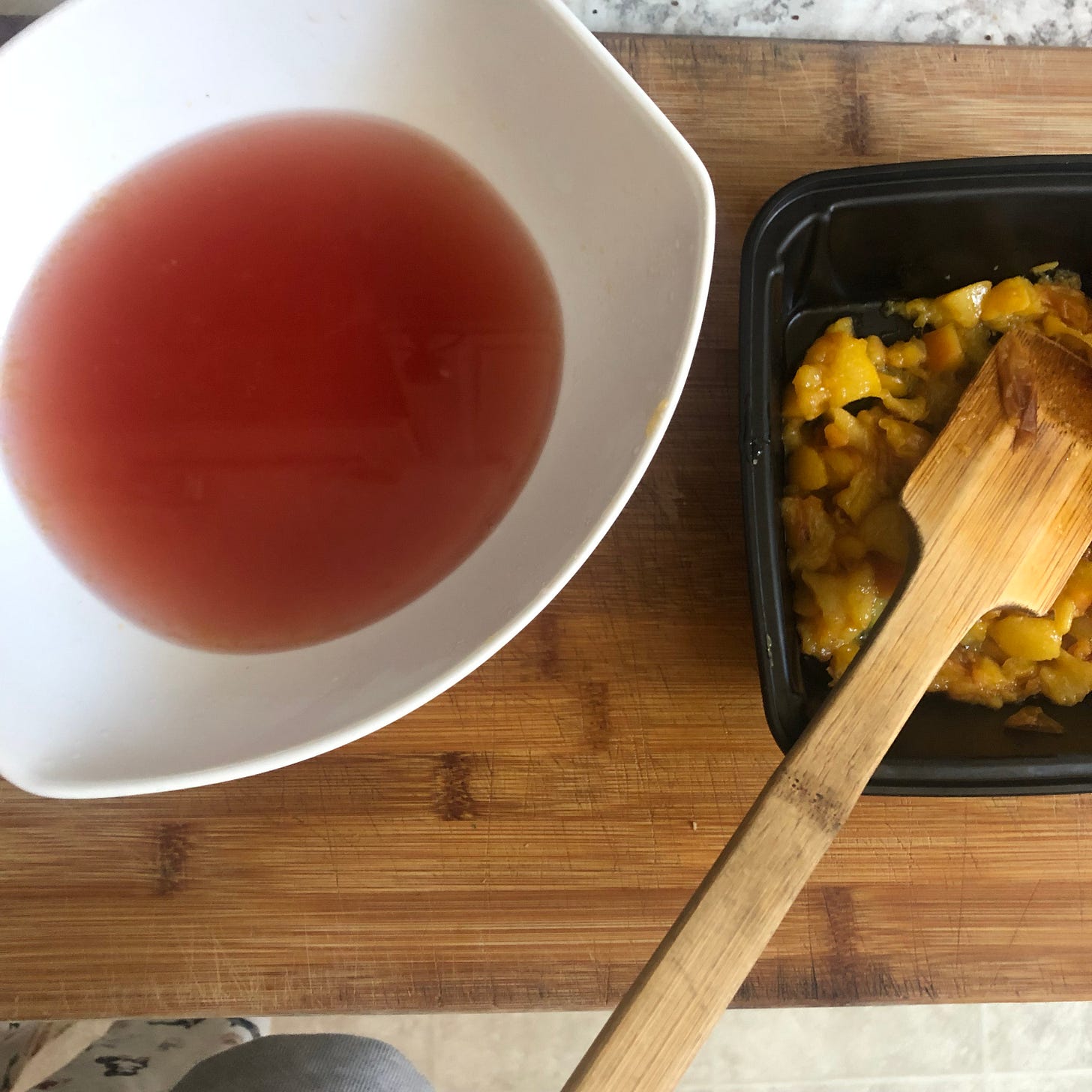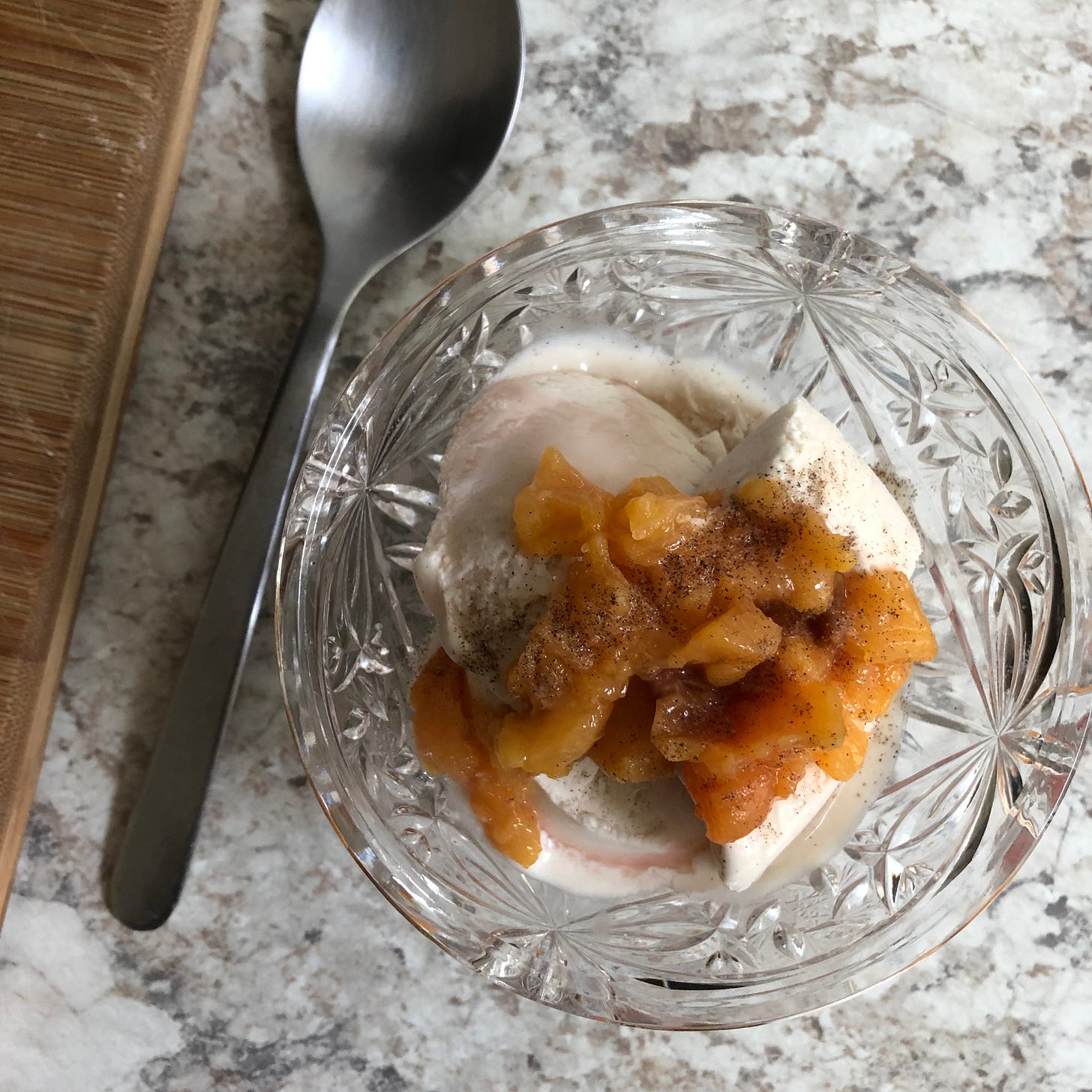Back when I still had access to the dilapidated balcony (literally hanging) off the back of my kitchen I’d toss too-soft-for-me blueberries and firm bread-bums to the squirrels and birds. The consequences of doing such a thing in an urban setting are wide ranging and while I wouldn’t necessarily recommend training your squirrel neighbours to come at the sound of the opening door, I will say that I miss my chittering friends. Despite the occasional home invasion, we had an agreement based on our diverging understandings of use and waste.
On a small scale, sharing leftovers with these friends doesn’t feel catastrophically reprehensible. In fact, these companions help remind me that just because something won’t feed me doesn’t mean it won't feed others. And yet, even with multispecies agreements like these, reckoning with food waste can be troubling, and for good reason. I can see why some might call it wasteful, or enabling wasteful behavior on my part. When produce is an expensive and labour-intensive resource and when, globally, about 31% of food is lost from harvest (meaning it doesn’t get eaten by people) it makes sense to be efficient and careful with it.
That’s to say that despite what I personally do to reframe how I think about food waste, non-human life, the brilliance of rot and decomposition, I can’t reframe the impacts of exploitative systems. That’s to say that even with my squirrel teachers and our agreement to share (despite the locked door, I still find ways to give them scraps), “waste” feels like a big deal, especially under the conditions of colonial capitalism which sustains, among other things, labour exploitation, climate disaster and such uneven distributions of necessary resources, like food.
Waste can mean many different things depending on the context.
Fruit scraps; wrappers leftover from a snack; other polluting matter; spilled coffee; the shirt with tags still on glaring at you from the closet; all the time I spend vacuuming the stairs when it is summer and there is a german shepherd living in my home. A waste.
I think there is a lot to say about making that which is generally considered waste usable. There are limitations and affordances to these kinds of transformations (I’m thinking about Ahmed’s The Uses of Use) but that’s a topic for another time. For today, I’m going to keep with waste as it is generally conceived of under capitalism.
In conversation with Rebecca Burgess, economic anthropologist Jason Hickel explains:
“under capitalism production is focused on exchange value. Now, what I mean by that is that the point of producing things is not primarily in order to meet concrete human needs, like the human need for clothing and housing or beauty, but rather to generate and accumulate profits. That's the core objective of a capitalist economy. So the result is that we end up with an economy that produces an extraordinary amount of stuff. I mean, nobody would deny that capitalism is incredibly productive and yet we still have social crises everywhere we look. We have poverty, we have hunger. We have other basic needs that remain unmet.”
Under these conditions, where the goal is to generate exchange value, we can see how waste might refer to excess that doesn’t get used or doesn't get used well. Waste can be material, like food, or space; or something slippery, like time. It suggests a mode of unproductiveness, of uselessness, that has no inherent value to extract from, or a limited value.
What is considered waste says something about what (and where and who) is and is not considered valuable and useful. Material waste, like a plastic wrapper, may appear to be an isolated object, something that goes in the trash– just a wrapper–but where it ends up might offer helpful insights into the peoples, plants, animals and spaces that are rendered as waste under the conditions of colonial capitalism.
Waste, therefore, can be a cue for thinking about whose limits, life cycles, rhythms and usages are disposable under current social, political and economic orders.
I’ve been learning more about the textile industry lately and it has been instructive in my thinking about food, particularly because of how sustainable fashion writers weave together ideas about excess waste and its environmental impacts with labour exploitation.
There are many overlaps between textile production and food production. This makes sense given many fabrics are bound to, or are themselves labour intensive agricultural products (if this is something you’re interested in learning more about, I’m linking an amazing podcast below).
For Good on You, Solene Rauturier writes that
“with the advent of fast fashion, retailers started producing clothes at breakneck speed, with the goal to get the newest styles on the market as fast as possible, so shoppers can snap them up while they are still at the height of their popularity and then, sadly, discard them after a few wears. It’s this toxic system of overproduction and consumption that has made fashion one of the world’s largest polluters.”
Not only does textile waste end up in places like Accra, Nairobi, the Atacama Desert, as well as countless other sites which are located beyond the purview of target consumers, these textiles are produced by people–from fields to factories– whose labour is invisibilized and cheapened. The “breakneck speed” at which the fashion industry, and the food industry, for that matter, are able to churn out products and mitigate the financial risks of overproduction relies upon various forms of extraction, predominantly of labour (as Rachel Faller explains on this episode of Boss Barista, most garment workers do not make a minimum wage and are instead paid a piece rate to encourage quick production– pickers of cotton, fruits, and the like have similar expectations placed on them).
So while the average garment worker is being paid pennies, and mountains of clothing are piling up in “unseen” places, fast fashion brands like Shein had revenue increases of almost 400% from 2019 to 2021.
This so-called growth is built upon disposability and hurdles us ever closer to our planet’s limits.
In her essay “On Limits” Alicia Kennedy addresses the popular adage “there is no ethical consumption under capitalism.” She writes:
“There is, in my beliefs, ethical consumption under capitalism, to an extent, but that extent is different for everyone, based on myriad factors…There are choices sometimes—limited choices, but choices nonetheless, within a limiting and corrupt global economic order. But we all have to determine our own limits, when it comes to money, ability, geography, tradition, etc.”
I find limits to be a helpful way for holding individual agency and community responsibility together within what Kennedy has aptly called “a limiting and corrupt global economic order.”
On the one hand, limits leave space to account for the ways that differently resourced peoples and places can and do participate in, among other things, climate action and food advocacy work– work that is not only by and for the well-resourced. On the other hand, I’m reminded that we can make choices that have impacts based on our limits and, at the same time, act in the direction of generating better choices for all.
The kind of negotiation that limits suggest reminds me of adrienne maree brown’s discussion of fractals, which she describes as the elements that frame the relationship between small and large systems.
In Emergent Strategy, which I am currently reading, brown understands that “what we practice at the small scale sets the pattern for the whole system” (53). She is clear, “this doesn’t mean to get lost in the self” (53). Rather, practicing at the small scale means seeing “our own lives and work and relationships as a front line, a first place we can practice justice, liberation, and alignment with each other and the planet” (53).
From these scattered thoughts on waste, I hope it is clear that we need a different relational economy, one in which people, places and animals are not rendered disposable. I’d love to live in a place where sustainability, the buzzword of the decade, has nothing to do with balancing growth targets and economic losses with resource depletion. I’d like sustainability, as a practice, to centre human and planetary wellbeing (I’m still sorting out what I mean by “wellbeing” in this context as I think with disability justice scholars and activists), where paying workers fairly is a given but also where people’s needs are just met, where one’s ability to work does not dictate whether or not they deserve to be well fed, and where we are all (able to be) held a little more closely to the limits of the climate in which we live.
But this is “whole system” stuff. So, taking my cue from brown, I’ll ask, what could this look like, right now, in our different lives and within our own diverging limits? Your answer will be different from mine.
For me, sometimes, it’s sharing with squirrels, community fridges, friends, etc. It’s passing things along when and where I can and not scrounge every morsel to insulate against “economic losses.” It’s noticing where my limits and the limits of others might intersect and being a bit creative about what to do with that.
Right now, as the summer leaves Southern Ontario, I’m here negotiating with peaches over our limits and so, I will leave you with the following recipe (if you could call it that) for peach syrup.
Peach Simple Syrup: A recipe inspired by the limits of peaches
What you’ll need:
Saucepan
Strainer or cheesecloth (you can make do without but either of these will make things easier)
1 cup sugar
I use whatever I have, which is usually granulated sugar or cane sugar
1 cup water
At least 3 extra ripe peaches
There is no rule on the amount of peaches you can use. If you want the syrup super peachy, use more. If you have an ungodly amount of peaches, double the batch. If you have blueberries or strawberries or pears instead of peaches, use those. It’s your call.
Optional: sprinkle of cardamom
Method:
Add the sugar and water to your saucepan and set the mixture at medium heat while you cut your peaches.
Once the peaches are cut and the sugar is dissolved, add your peaches to the saucepan. Sprinkle in cardamom if desired.
Stir occasionally until the peaches are falling apart and the skins begin to peel away from the flesh (approx 5-7 mins).
Separate the peaches by straining the syrup into a bowl, pressing out some of the peach juices as you go for extra peachy flavour
Let cool.
Once cooled, put the syrup into a bottle and the peach pulp into a separate container
Store in the fridge. The syrup will last up to one month in the fridge. The pulp should be consumed within 4 days.
Syrup: lasts up to one month in the fridge
Pulp: Consume within 4 days
Favourite uses:
cocktails/mocktails
ice cream topper
Reading
What I finished in August:
Fledgling by Octavia Butler
Queer Twilight energy (but before Twilight was a thing). I ate this one up!
Who is Wellness for? By Fariha Róisín
CW: sexual abuse
A memoir/non-fiction that reflects wellness culture, appropriation in wellness culture, and the commodification of care.
Podcast
Weaving Voices with Rebecca Burgess by Whetstone Radio Collective
Described as a “podcast that stitches textile systems and traditions, economic philosophy, and climate science into a quilt of understanding. Designed to transform our thinking and actions both as citizens and material culture makers and users.”
TV
Canada was late to the party with the release of The Bear so we’re only just entering our “yes, Chef” moment.









